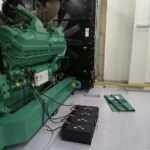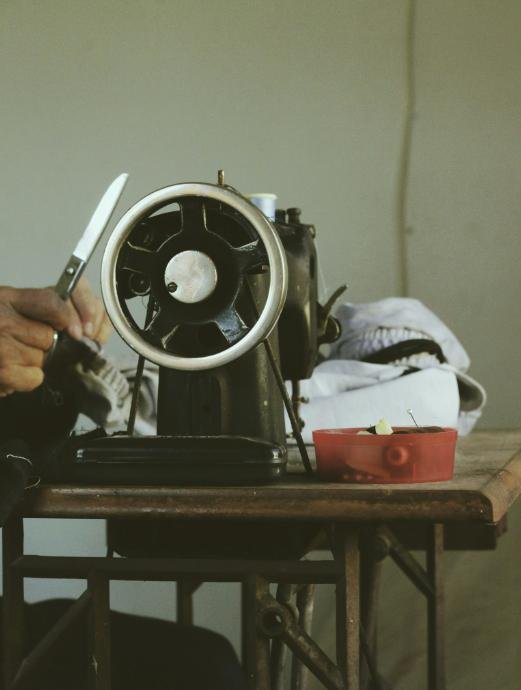Introduction to Sewing Machine Maintenance
Sewing machine maintenance is an often overlooked yet crucial aspect of owning and operating these intricate devices. Regular maintenance not only improves performance but also extends the longevity of the machine, ensuring that it operates smoothly for years to come. Just as a car requires regular servicing to stay in optimal condition, sewing machines benefit significantly from routine check-ups and care.
By maintaining sewing machines effectively, users can improve stitch quality, reduce the risk of mechanical failure, and enhance overall operational efficiency. Without proper care, machines may suffer from dust and lint buildup, which can lead to complications such as thread tension issues or even complete malfunction. Regular servicing can identify and remedy these problems early, therefore preventing more serious, costly repairs down the line.
The frequency of service is a key factor in maintaining a sewing machine’s performance. Depending on the type, frequency of use, and environmental conditions, recommendations for service intervals may vary. For amateur sewers who use their machines sporadically, a biannual inspection may suffice. Conversely, those who utilize their machines for more intensive tasks may discover that quarterly maintenance is essential for ensuring uninterrupted operation.
Establishing a regular maintenance schedule can significantly contribute to sewing success. Not only does it prevent unexpected downtime, but it also allows users to focus on their creative endeavors without the worry of mechanical disruptions. In the following sections, this guide will delve deeper into the various aspects of sewing machine servicing, ultimately equipping readers with the knowledge necessary to enhance their sewing experience.
Signs Your Sewing Machine Needs Servicing
Regular maintenance of a sewing machine is essential to ensure its longevity and optimal performance. There are several signs that indicate a sewing machine may require servicing. Being aware of these indicators can help prevent further issues and maintain sewing quality.
One of the most common signs is the presence of unusual noises during operation. If your machine starts producing grinding, rattling, or clicking sounds, it may indicate internal problems. These sounds often suggest that parts are misaligned or in need of lubrication. It is crucial to address these noises promptly, as ignoring them can lead to more severe damage.
Skipped stitches are another clear indicator that servicing is necessary. When your sewing machine fails to create a consistent stitch pattern, it can be frustrating and impact your projects. Skipped stitches may occur due to dull needles, incorrect threading, or malfunctioning mechanisms. Regularly changing needles and ensuring they are suitable for your fabric type can help, but if the issue persists, professional servicing is advisable.
Thread tangling is another common ailment that indicates a machine may need attention. If thread frequently tangles or breaks, it could be a sign of poor thread tension or an issue with the bobbin area. Check your machine’s threading and bobbin insertion first; if these are correct and the problem continues, consider bringing it in for a check-up.
Lastly, inconsistent tension can significantly affect the quality of your sewing projects. If the stitches appear uneven or loose, it may indicate that the tension discs are clogged or out of adjustment. Ensuring proper tension is crucial for achieving professional-looking results. As a best practice, if any of these signs become apparent, scheduling a servicing at your earliest convenience is highly recommended, ensuring your sewing machine remains in good working condition.
Factors That Influence Servicing Frequency
Understanding the factors that influence the frequency of sewing machine servicing is essential for maintaining optimal performance. One of the primary factors is the type of projects undertaken by the user. For instance, intensive quilting or sewing heavy fabrics can generate more lint and wear on the machine compared to light sewing tasks. Consequently, those who engage in demanding sewing projects may find that their machines require servicing more often to prevent breakdowns and ensure smooth operation.
Another crucial factor is the frequency of use. A sewing machine that is used daily will inevitably face more strain than one that is used occasionally. Frequent use can lead to quicker degradation of components, making regular servicing imperative for those who sew on a regular basis. The longevity and reliability of the machine can be preserved through a consistent maintenance schedule tailored to the user’s sewing habits.
The brand and quality of the sewing machine also play a significant role in determining servicing needs. Higher-end models often come equipped with advanced technology and superior construction, which may result in less frequent servicing requirements. Conversely, entry-level machines may need more frequent attention due to the lower quality of materials used. It’s important to consult the manufacturer’s guidelines, which typically include recommendations on servicing intervals based on the machine’s capabilities and intended use.
In summary, a user’s specific sewing habits, the intensity and type of tasks they undertake, and the inherent quality of their machine are all critical elements to consider when determining how often to service a sewing machine. By evaluating these factors, users can create a personalized maintenance schedule that ensures the longevity and effectiveness of their sewing machines.
Recommended Service Schedules for Different Sewing Machines
Understanding the appropriate service schedules for different sewing machines is essential for maintaining optimal performance and longevity. The service intervals can vary significantly based on the type of sewing machine, whether it is domestic or industrial, as well as the manufacturer’s recommendations. Generally, domestic sewing machines require less frequent servicing than their industrial counterparts due to differences in usage and workload.
For domestic sewing machines, a standard maintenance routine involves servicing every 12 months or after approximately 20 to 30 hours of operation. This frequency is sufficient to keep the machine in good working condition, ensuring that dust and lint are removed and the components remain lubricated. Additionally, domestic machine users should consider performing light cleaning and oiling themselves more often, such as every few sewing sessions. This regular care contributes to smooth operation and prevents buildup that could lead to problems.
In contrast, industrial sewing machines, which are designed for heavier workloads, typically require more frequent service due to the higher intensity of use. It is advisable to schedule servicing every 3 to 6 months, or after 250 to 500 hours of operation, depending on the specific type of machine and workload. Furthermore, certain brands may have specific recommendations; for instance, companies like Juki and Brother may stipulate unique servicing needs based on their machines’ construction and technology. Therefore, referring to the user manual provided by the manufacturer is crucial to adhere to the recommended service schedules.
Ultimately, recognizing the differences in servicing needs between domestic and industrial sewing machines allows users to maintain their equipment effectively. By following these guidelines, seamstresses and tailors can ensure their sewing machines remain in top condition, thereby enhancing both the quality of their work and the lifespan of their machines.
DIY Maintenance vs. Professional Servicing
When it comes to maintaining your sewing machine, understanding the balance between DIY maintenance and professional servicing is crucial. Performing routine maintenance tasks at home can greatly extend the lifespan of your machine and ensure it operates efficiently. Simple actions such as cleaning the machine after each use, changing the needle regularly, and oiling the relevant parts can be undertaken by almost any sewing enthusiast. These tasks help prevent the buildup of lint and dust, which are common culprits of machine malfunctions. Moreover, executing basic upkeep allows users to become more familiar with their machines, fostering skills that enhance overall sewing efficiency.
However, there are limitations to DIY maintenance. While handling basic tasks is beneficial, more complex issues such as motor problems, timing issues, or electrical failures are best left to professional technicians. These experts possess specialized knowledge and tools that can accurately diagnose and fix intricate problems. Moreover, they can provide in-depth servicing which not only restores functionality but can also improve performance and longevity. In scenarios where a machine is under warranty, seeking professional help is often a requirement to maintain coverage, as unauthorized repairs could void warranties.
Deciding whether to perform DIY maintenance or seek professional servicing largely depends on the user’s comfort level and expertise, alongside the nature of the issue. For straightforward tasks, DIY maintenance is an excellent way to develop skills and care for your sewing machine. In contrast, for more complicated repairs, professional servicing provides reassurance that the machine will be in expert hands, ensuring optimal performance once more. A combination of both DIY efforts and professional assistance is often the best approach to keeping your sewing equipment in prime condition.
Preparing Your Sewing Machine for Service
When it comes to ensuring the longevity and optimal performance of your sewing machine, proper preparation before servicing is crucial. By taking the time to clean, organize, and document before handing over your machine, you can facilitate a smoother servicing experience. Below are the essential steps to prepare your sewing machine for service effectively.
Firstly, begin with cleaning your sewing machine thoroughly. Dust and fabric lint can accumulate inside the machine and affect its performance. Use a soft brush and a microfiber cloth to remove any debris from the exterior and inner components. Pay close attention to areas such as the bobbin case, feed dogs, and tension discs. A well-maintained machine not only operates better but also helps the technician identify potential issues more easily.
Next, remove all accessories, such as feet, needles, and the power cord. Store these items in a separate pouch to avoid misplacement and to keep the workstation organized. By doing this, you ensure that the technician can focus solely on the machine without the distraction of scattered accessories.
It is also essential to document any specific issues you have encountered during your sewing projects. Make a list of problems such as unusual noises, thread tension issues, or skipped stitches. This information serves as a valuable reference for the technician, allowing for more targeted troubleshooting and efficient service. Consider noting the types of fabrics and projects you typically work on, as this context can assist in diagnosing any underlying problems.
Finally, check the machine’s warranty and service history, if applicable. Having this information on hand can help the technician better understand your machine’s service needs and any previous repairs. Following these preparation steps can lead to a more efficient and successful servicing experience, ensuring your sewing machine is back to optimal performance in no time.
Cost of Sewing Machine Servicing
Understanding the cost associated with sewing machine servicing is essential for maintaining your equipment’s longevity and performance. Regular servicing not only ensures that your machine operates smoothly but also helps prevent larger, costlier repairs in the future. Generally, the servicing costs can vary based on several factors, including location, machine type, and the complexity of the service required.
For basic maintenance such as cleaning, oiling, and minor adjustments, expect to pay between $50 to $100. This level of service typically covers the essential needs to keep your sewing machine in good working condition. These routine check-ups are vital for hobbyists and professional sewists alike, as they minimize the risk of malfunction and extend the life of the machine.
However, when more extensive repairs are necessary, costs can increase significantly. Repairing a sewing machine can range from $100 to $300 or even more, depending on the specific issue and parts required for replacement. Factors such as the brand of the machine and the availability of parts can also impact pricing. For instance, vintage or higher-end sewing machines may incur additional costs due to the unavailability of replacement parts or specialized knowledge required for repairs.
It is important to consider the long-term benefits of regular servicing. Investing in routine maintenance may initially appear costly, but it can save you a substantial amount in the long run by preventing potential breakdowns. Additionally, a well-maintained sewing machine tends to perform better, providing better results and enhancing the sewing experience.
In conclusion, budgeting for sewing machine servicing should include both routine maintenance and potential repair costs. Understanding these expenses ensures that you can keep your machine functioning effectively while enjoying your sewing projects without interruptions.
Common Mistakes to Avoid with Sewing Machine Maintenance
When it comes to maintaining a sewing machine, many sewists often overlook critical aspects that can affect the longevity and performance of their equipment. Understanding these common mistakes is essential for proper sewing machine care.
One prevalent mistake is neglecting regular cleaning. Dust and lint can accumulate in the machine’s inner workings, hindering its performance and possibly causing malfunctions. Many sewists underestimate the significance of routine cleaning, which should ideally be performed after every few projects or at least once a month. Ignoring this basic maintenance task can lead to more substantial problems down the line, such as thread jams or even motor issues. Therefore, it is advisable to take the time for thorough cleaning to ensure smooth operation.
Another common error is ignoring warning signs that the sewing machine may indicate. Sounds such as unusual grinding, skipped stitches, or erratic behavior can be easily dismissed, yet they serve as essential alerts regarding potential issues within the machine. By failing to address these signs promptly, sewists may encounter more severe issues that require professional servicing and can lead to costly repairs. It is imperative to be attentive and proactive when it comes to the machine’s operational behavior.
Additionally, some sewists tend to over-lubricate their machines, mistakenly thinking that more oil will enhance performance. However, excessive lubrication can attract dust, ultimately leading to more frequent cleaning requirements and operational problems. It is essential to adhere to the manufacturer’s guidelines regarding lubrication amounts and frequency to maintain the sewing machine effectively.
By being mindful of these common mistakes, sewists can enhance the efficiency of their machines and prolong their lifespan, allowing for a more enjoyable sewing experience.
Conclusion
Maintaining a sewing machine through regular servicing is essential for ensuring its longevity and optimal performance. Throughout this guide, we have explored various aspects of sewing machine care, emphasizing the importance of adhering to a servicing schedule. A well-maintained sewing machine not only enhances efficiency but also provides a more enjoyable sewing experience.
We recommend that sewists establish a routine servicing plan, which may include full professional checks at least once a year, coupled with periodic at-home maintenance. Such practices, which may involve cleaning, oiling, and adjusting tension settings, are crucial in preventing more significant issues down the line. A proactive approach is favorable in identifying potential problems early, thus saving both time and costs associated with major repairs.
Moreover, it’s worth noting that the frequency of servicing may vary depending on usage frequency and the type of machine. Heavy users, for instance, might benefit from more frequent professional maintenance to sustain peak functionality. Conversely, infrequent users should still ensure regular checks to maintain the machine’s reliability and achieve smooth operation during projects.
Additionally, being attentive to the machine’s performance is vital. Unusual noises, skipped stitches, or thread jams are indicators that it may require immediate attention. Addressing these issues promptly will contribute to the overall health of the sewing machine.
In conclusion, regular servicing is the key to keeping your sewing machine in top condition, ensuring that it remains a reliable tool for your creative endeavors. By implementing the recommended practices, you can enjoy a functional and efficient sewing experience for many years to come.






